
Tavira lies along the Gilão River, where the Old Town’s cobblestone streets lead to whitewashed churches, shady squares, and homes that preserve the traditional architecture with pyramid-shaped rooftops. Tavira is a delightful mix of traditional Portuguese heritage with deep-rooted Moorish influences. The town boasts a rich history, fascinating tourist attractions, and glorious sandy beaches.
South of Tavira are the protected waterways and mudflats of the Parque Natural da Ria Formosa, which leads to the beautiful sandy beaches of the Ilha de Tavira. Boats go to the barrier islands of the Natural Park, which have some of the best beaches in the region. All this makes it a perfect destination for those looking for a holiday combining culture and beach.
Surrounding Tavira are the fascinating towns of Olhão, Vila Real de Santo António, and Cabanas, along with world-class golf courses and unspoiled countryside.
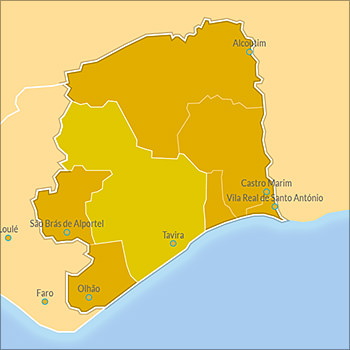
Attractions in Tavira
Tavira is a compact town and is a joy to explore for a day trip. The town is divided into two by the Gilão River, with the original Moors settlement on the western bank, while the eastern side developed later, 15th century onwards, and is more classical Portuguese.
- Igreja da Misericórdia
It is said that Tavira has 37 historic churches, but this is the one you should not miss. This church is the finest example of Renaissance architecture in the Algarve. It was built in 1541 and embellished with baroque decoration in the 1700s. The magnificent retable dates from 1722, so it’s an extremely rare survivor of the 1755 earthquake that destroyed most of the city. The walls inside are lined with blue-and-white tile panels, created in 1760 in the rococo style and illustrating scenes from the life of Christ. It’s worth climbing up to the bell tower for a view over Tavira.

- Tavira Castle
The Castelo de Tavira was an important stronghold for the Moors, positioned at the highest point of the region to guard the river and town. It is essentially a Moorish construction from the 10th century. The walls were strengthened by the Portuguese King, Dinis I in 1292 when the Moors were expelled and Tavira became part of the Kingdom of Portugal. But the entire castle was severely damaged by the 1755 earthquake and only the walls and towers survive.
Today the castle’s courtyard has been transformed into an ornamental garden, and the battlements can be climbed, providing panoramic views over the town, so it’s very much worth visiting.

- Igreja de Santa Maria do Castelo
Located a short walk from the castle, this is a 13th-century church that was originally the largest mosque in the Algarve, before being converted into a church after the Reconquista of Tavira in 1242. The original Gothic church was rebuilt in a neo-classical style after the 1755 earthquake.
Its highlights are the original gothic portal and a couple of gothic and Manueline (Portuguese gothic) style chapels, but everything else dates from the reconstruction. It also houses the tombs of seven knights and Paio Peres Correia, who helped conquer Tavira from the Moors in 1242. The large clock on one of the towers was added in the 1800s and is one of Tavira’s main landmarks. From the top of the bell tower are some of the best views of Tavira.
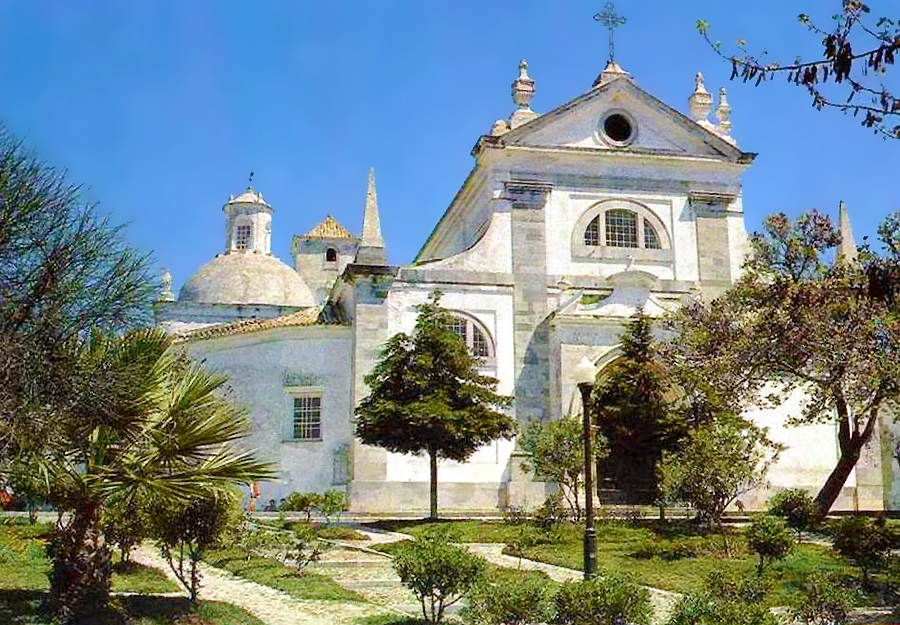
- Camera Obscura
This unsightly water tower sits at the highest point of the town, but it has been converted into a decent tourist attraction. Inside the darkened room, the Camera Obscura provides 360 real-time views of the city through mirrors located throughout the city.
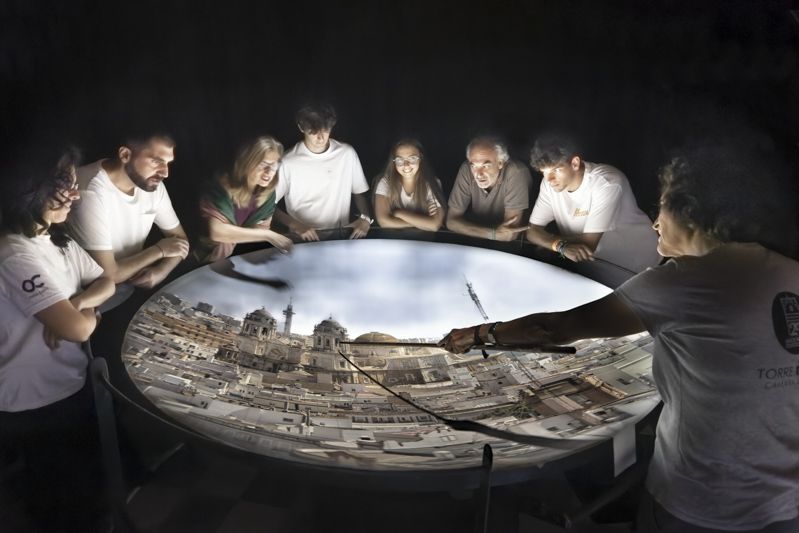
- Praça da República
The Praça da República is the main plaza of Tavira and historically was the market square. Standing at the center is a monument dedicated to the soldiers of the First World War.
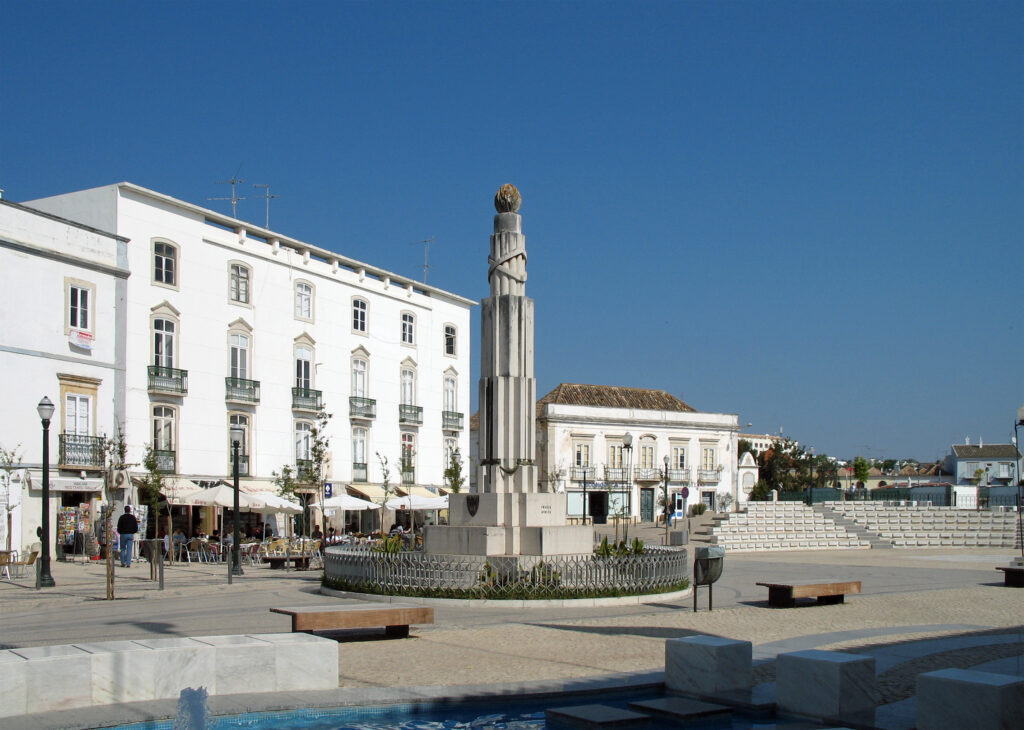
- Mercado Municipal
Every morning a lively market is held in the local marketplace, with stalls selling fish, fresh produce, and local handicrafts. This is a great place to experience typical Portuguese daily life, and also find a bargain gift.
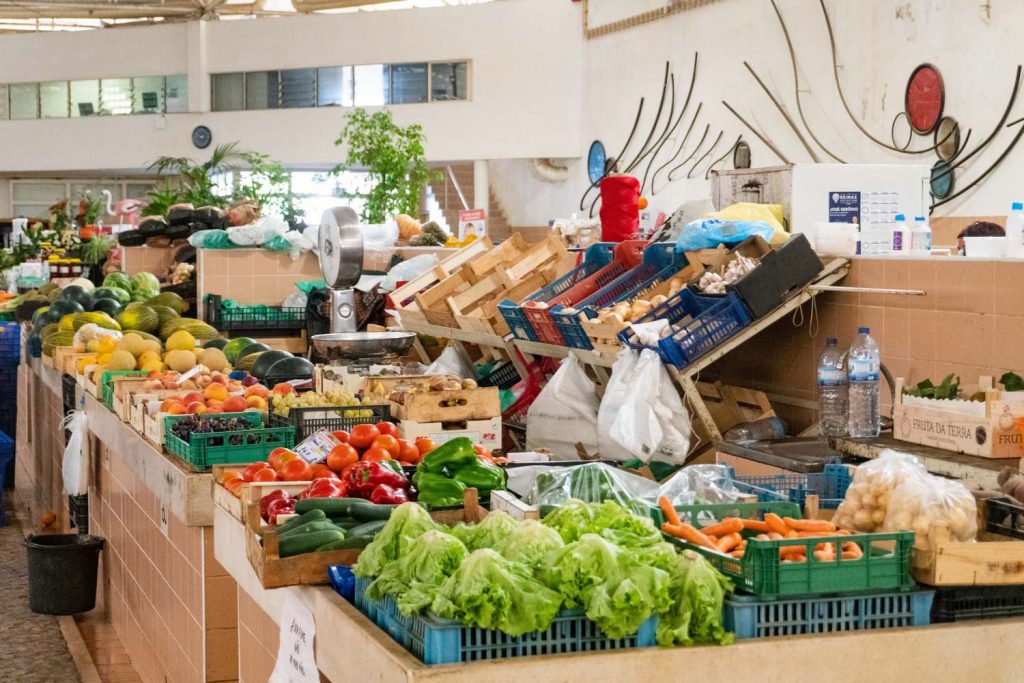
- Roman Bridge
This seven-arched bridge is said to date back to Roman times, but the bridge that you cross today dates from the 17th century. It was part of the route connecting today’s Faro and Castro Marim, but nothing of that first structure survives to this day. It was restored and rebuilt many times over the centuries, and most recently in 1989, when it was damaged by a major flood. Since that time, cars are no longer allowed on it, so it’s exclusively used by pedestrians to cross the river, but it is also a perfect place to photograph a panoramic view of the city.
At low tide, fishermen scour the riverbed for clams and shellfish.
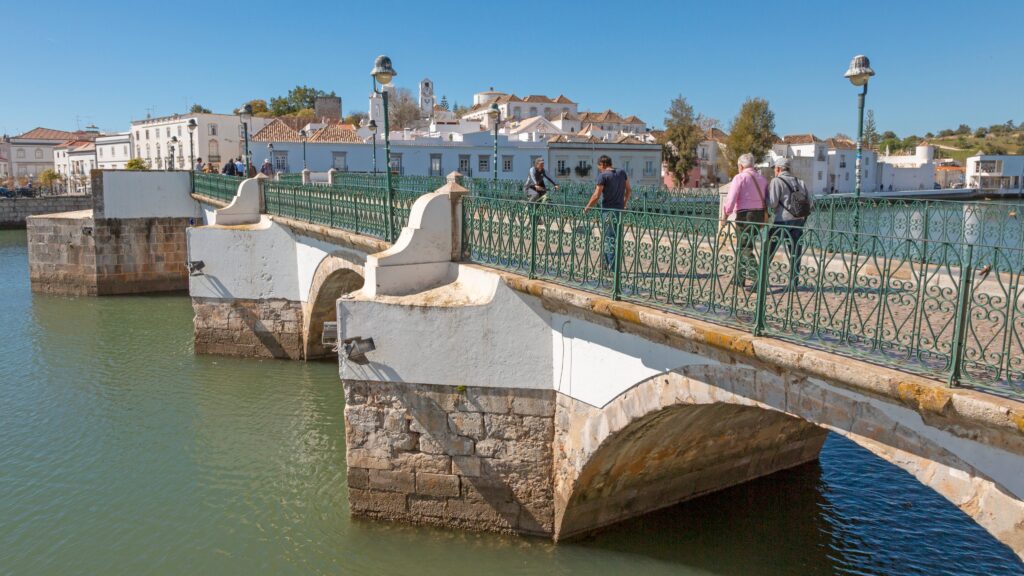
- Mercado da Ribeira
The Mercado da Ribeira is the former covered market, which now houses a selection of restaurants and shops. The market opens out on the Jardim Público de Tavira with its decorative wrought iron gate and views along the Gilão River.
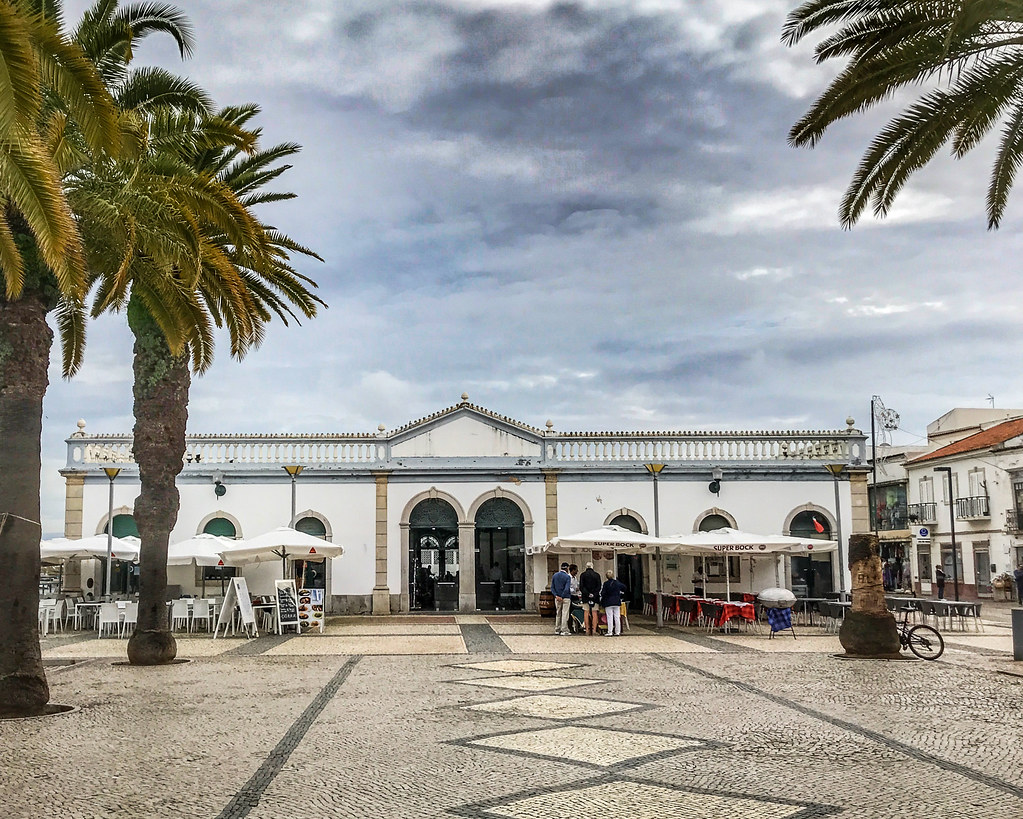
- Igreja de Santiago
This church is very similar to Santa Maria do Castelo and stands just a few feet away. It dates back to 1270, and just like almost everything else in town, was restored after the 1755 earthquake. It kept the exterior plain but was decorated with art (including 15th-century paintings and baroque altarpieces) brought from local churches and convents. The façade features a medallion representing a warrior-like St. James, alluding to a legend that says that he miraculously appeared in the battle of the Christian reconquest of Tavira.

What to do in Tavira
- Explore the historic center
Tavira has a charming historic center, and it is a joy to discover the rich history of the town. Tavira was an important Moorish trading town during the 8th-10th century, later a major port in the 14th century, and was completely rebuilt after the devastating 1755 earthquake.
In Tavira, there is a lot to see, including 36 churches, the ruins of the castle, and the delightful tiled houses of the fishermen’s quarter. Along with the historic sights, there are pretty plazas, riverside walks, and streets crammed with restaurants and cafes.
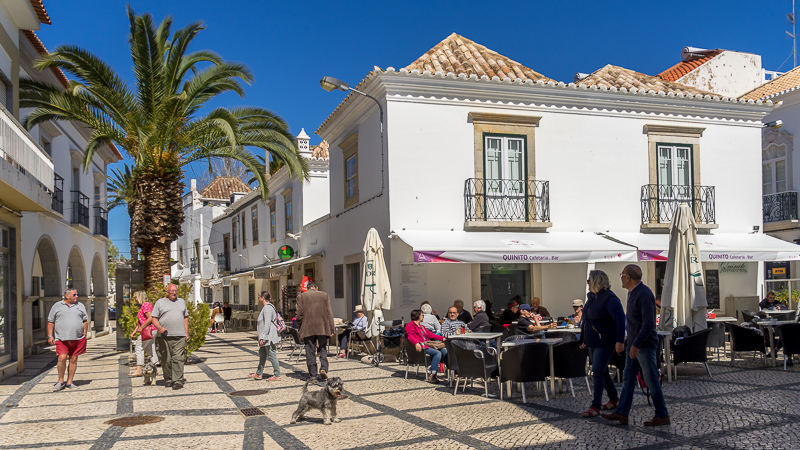
- Relax on the beautiful beaches
Tavira has a pristine coastline of sandy beaches and calm turquoise seawaters. The beaches are found on the seaward side of the Ilha de Tavira, and this island has a continuous sandy beach stretching for over 10 km. The most popular beach is the Praia de Tavira, which is reached by a ferry that departs from central Tavira. Further to the west are the quieter beaches of Praia do Barril and Praia da Terra Estreita.
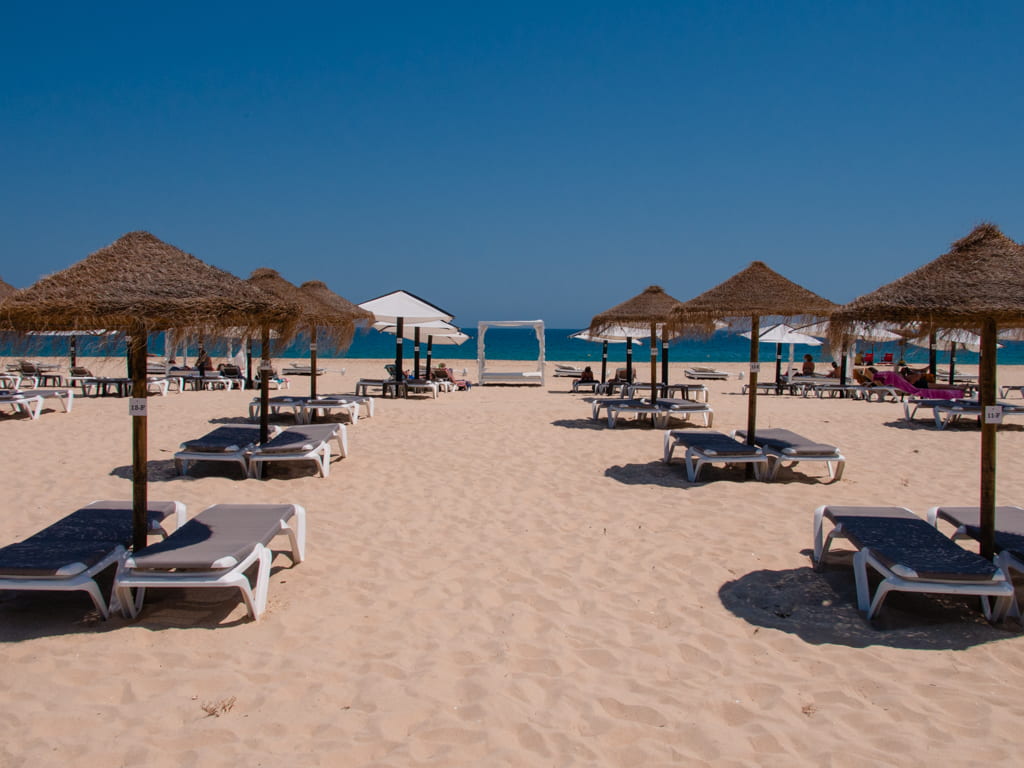
- Explore the Parque Natural da Ria Formosa
The Parque Natural da Ria Formosa are the salt lagoons and tidal mudflats, between the Ilha de Tavira and the mainland.
These wetlands have extensive wildlife, being an important location for migratory birds and wading birds. This protected fragile marine ecosystem includes also the world’s largest concentration of seahorses and preserves traditional fishing techniques and fishing communities. The best way to explore is by boat or informative tours departing from Tavira harbor. An alternative method is to hire a kayak or SUP and paddle through the calm waters.
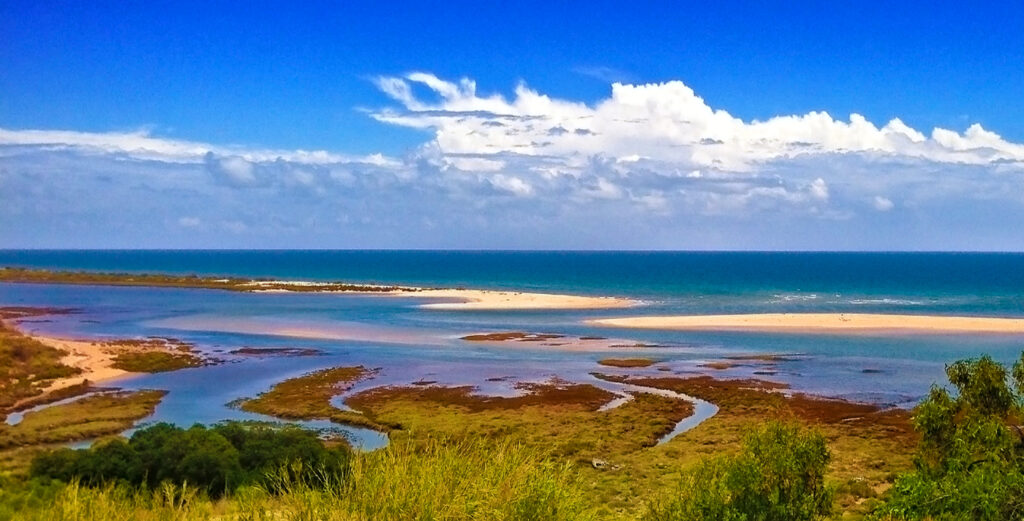
- Taste the fine and traditional cuisines
Tavira has an intense social nightlife scene, which is focused on the evening meal. During the evening, the smell of freshly cooked fish fills the historic center, as tourists and locals alike dine al-fresco, on dishes that are based on fish caught earlier in the day.
Wonderful settings locations for an evening meal are the pretty Jardim da Alagoa or around the Praça da República.
One of the most popular dishes of the Algarve is Cataplana, a hearty rice and seafood stew that is served in a large copper pot and is shared between two.
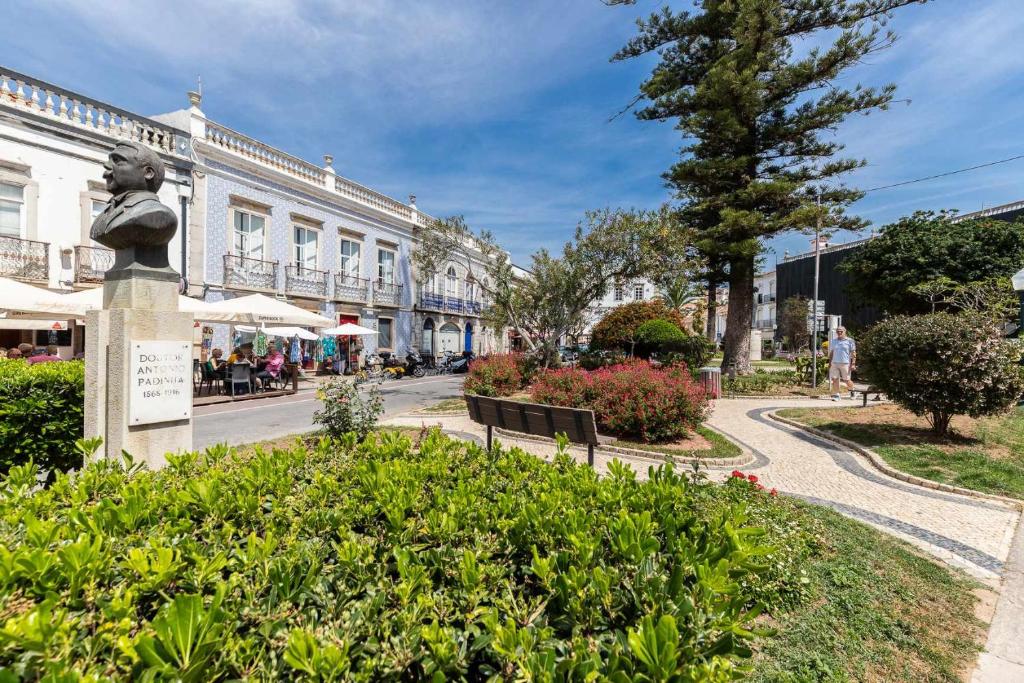
- Hire a bike and cycle
Tavira is connected to a cycle path (Ecovia do Litoral – Algarve Coast Bike Route) that extends along the entire Algarve. This route heads west to the fishing village of Santa Luzia, and further onwards to Praia do Barril beach.
In an easterly direction, the cycle path passes through the peaceful resort town of Cabanas. For the more adventurous, the cycle path continues to Monte Gordo and Vila Real de Santo António, 25km away. As the cycle route follows the coastline, there are no major hills to contend with.
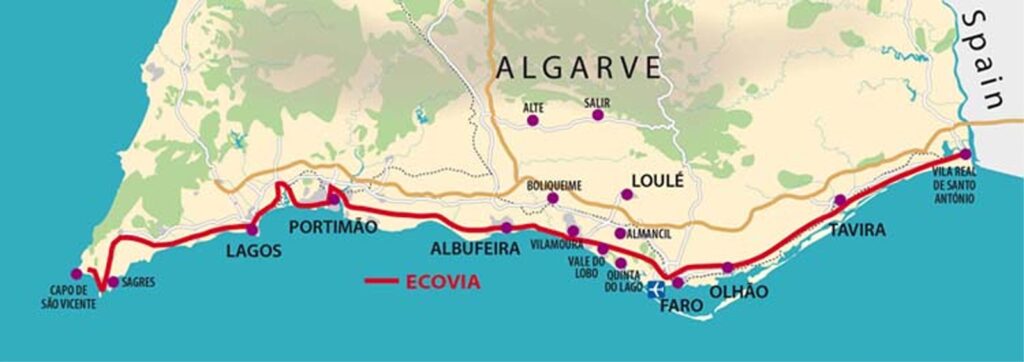
- Horse riding
Fancy riding a horse along a deserted beach? The Tavira Equestrian Tourism organizes daily horse rides for all abilities and ages, which can include routes along the beach. Visit their website here: https://taviraequestriantourism.com/
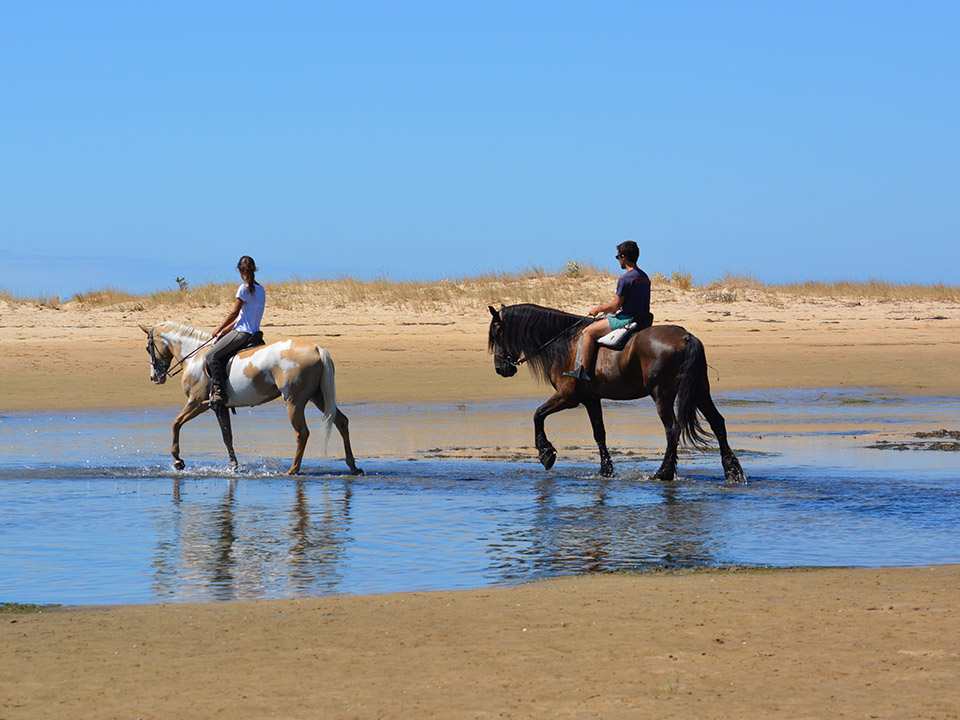
- Play golf
The eastern part of the Algarve boasts some of the finest golf courses in southern Portugal. There is the prestigious Monte Rei, the beautiful setting of the Benamor Golf Course, and the challenging course at Castro Marim. Being on the slightly less touristy eastern Algarve, the courses allow for a calmer game.
Castro Marim Golfe & Country Club: https://www.castromarimresort.com/
Benamor Golf: http://www.benamorgolf.com/
Monte Rei Golf & Country Club: https://www.monte-rei.com/en/golf/

Beaches of Tavira
Tavira has a beautiful coastline of golden sand beaches, calm turquoise sea waters, and pristine natural scenery.
The Ilha de Tavira has a 10 km long sandy shoreline that extends from Tavira in the northeast to Fuseta in the southwest. Its beaches are idyllic, with soft golden sands, and calm seawaters, and are protected from any ugly tourist development by the Parque Natural da Ria Formosa.
There are three access points onto the Ilha de Tavira from the mainland (two ferry routes and one footbridge), and this gives rise to the three beaches on the island: the most popular beach is the Praia de Tavira, while further along the shoreline is the tranquil Praia da Terra Estreita or the Praia do Barril with the anchor cemetery.
All three beaches are very similar, only varying with the number of visitors and the amount of beach cafes and shops.
The Praia de Tavira, being the closest to Tavira, is the busiest and has the most beach amenities, while the Praia da Terra Estreita is the quietest.
The ocean waters of the Tavira coastline are crystal clear but are surprisingly chilly, even at the height of the summer. During the peak season (June-August) its temperature is 21-22 °C, but this drops to 16-17 °C in the winter (December-February).
- Praia de Tavira
The biggest of Tavira’s two islands stretches for 11km (approx. 7 miles) and is divided into four beaches. The one on the easternmost side has the name of the island but is also known as Praia de Tavira (“Tavira Beach”). It’s the city’s most popular beach but is never overcrowded. There’s plenty of space to lie on the white sand with almost no one around, but those looking for a livelier atmosphere will find it by the beachfront restaurants, which are the only structures on the island. There are also soccer and volleyball nets, parasols, and loungers for rent. Getting there involves taking a very quick ferry and a short walk through a wooded area with pine trees.
The Praia de Tavira is a wonderful beach, and the majority of visitors will be happy to spend most of their holiday visiting this one beach. Behind the beach, there is a summertime place that includes a campsite, cafes, and shops. All of the facilities provide options for lunch, drinks, and snacks.
The beach can get very busy during the summer close to the sunshades. There are quieter sections of the beach to the southwest but be warned as the nudist beach (called Praia do Homem Nú) is around 1 km away.
There are daily ferry services that connect the mainland to the pier on the Ilha de Tavira. One departs from the western side of the harbor in central Tavira and operates during the peak season (May-Sep). It is a 200 m walk from the pier to the beach, and the route passes the campsite and beach cafes.
The other ferry departs from the Cais das Quatro Águas harbor, which is 2 km south of Tavira and has a large (paid) car park. The Quatro Águas ferry is a year-round service.
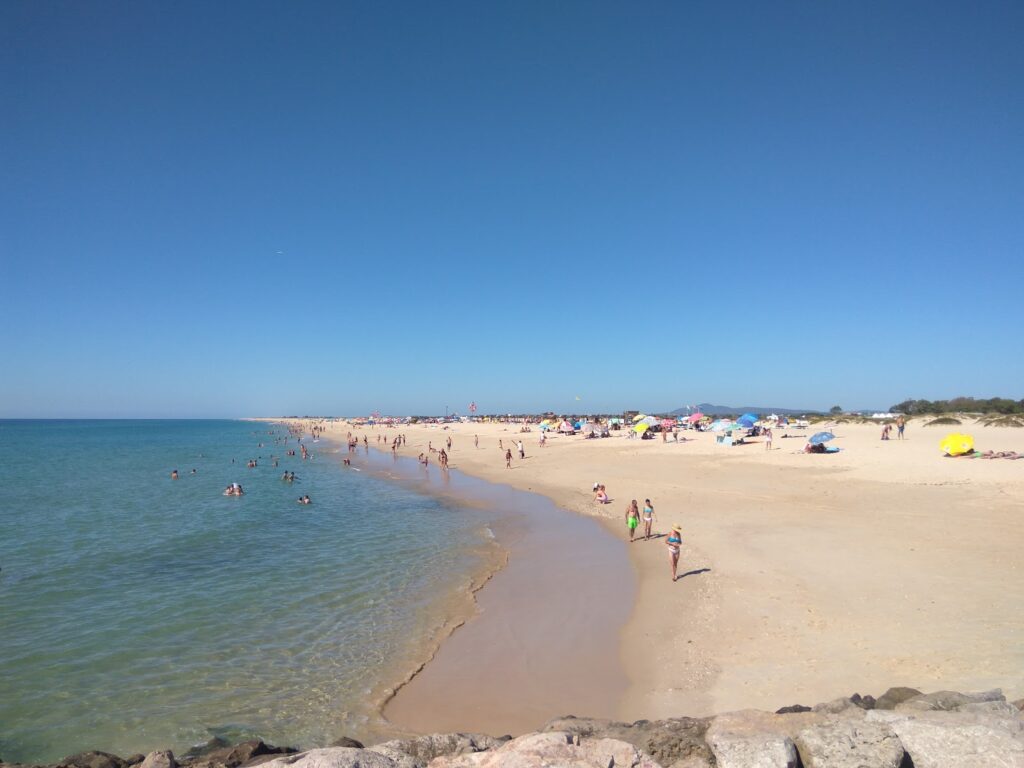
- Praia da Terra Estreita
Praia da Terra Estreita is an undiscovered beach by tourism and is one of the quietest beaches of the Algarve. The beach is located in the middle of the Ilha de Tavira, approx. 2 km from the Praia de Tavira and the Praia do Barril. On the beach, there is just a single beach bar/café while on either side of the beach are deserted stretches of coastline.
This is the beach to visit to escape the crowds, and the quiet and relaxed ambiance makes the beach a favorite of all who make the effort to travel here.
The beach lies in front of the small fishing town of Santa Luiza, 3 km to the east of Tavira, and there is a direct ferry from the town. During the summertime, this ferry departs every 15 minutes. But there is no direct ferry from Tavira.
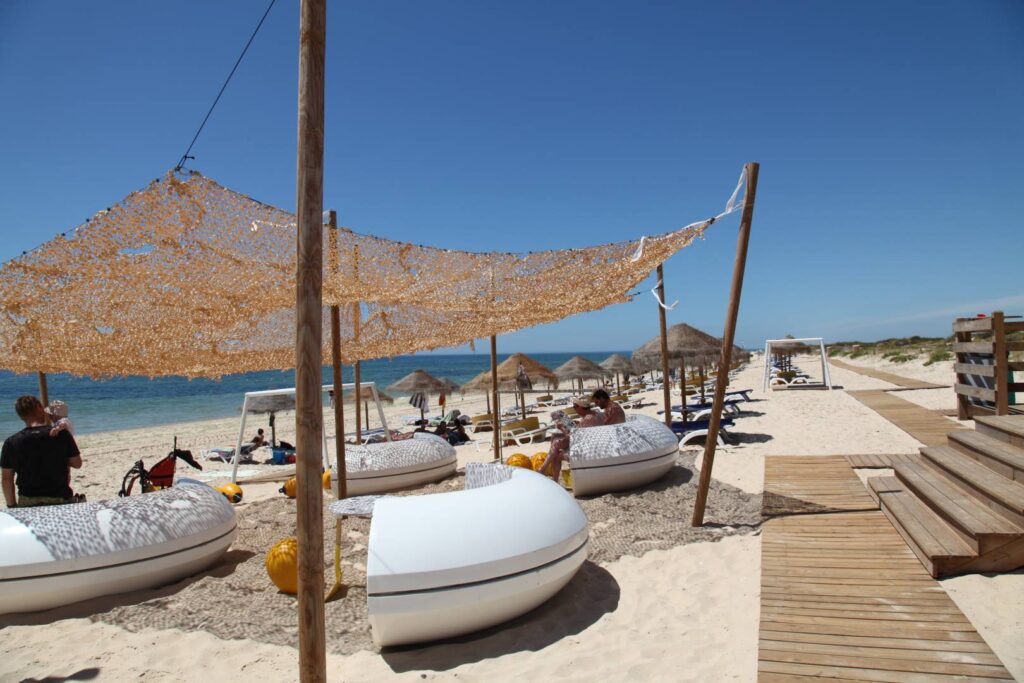
- Cabanas de Tavira
Tavira’s second island has one long beach, with 7 kilometers (over 4 miles) of soft, white sand. It has just one restaurant, reached via a boardwalk that protects the dunes. To get there, you have to head to the fishing village of Cabanas de Tavira, to the east of the center of Tavira, and take a boat. It takes less than 5 minutes to reach the island, and the journey offers an opportunity to observe a variety of birds and a fort built in the 1600s to protect the port of Tavira. This beach is never crowded, even in July and August.
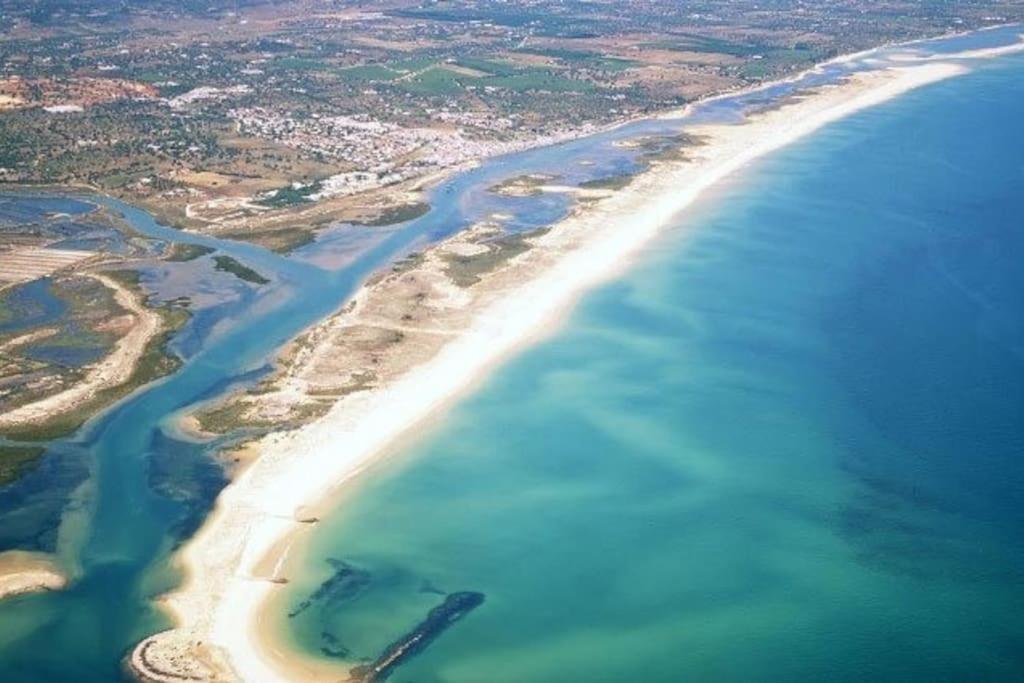
- Praia do Barril
It’s one of Algarve’s most photographed beaches. Along with golden sands and clear waters, the beach provides an insight into the fishing heritage of the region and is the setting for the Anchor Cemetery, a truly unique sight of the Algarve with over 100 anchors on the dunes.
Barril was a small fishing community that specialized in Bluefin Tuna fishing but was abandoned in the 1970s when fish stocks were depleted. Today, the small dwellings used by the fishermen have been converted into a selection of cafes, shops, and beach huts. The hundreds of anchors used for the tuna fishing nets have been aligned in the sand dunes as a rusting memorial to this former livelihood.
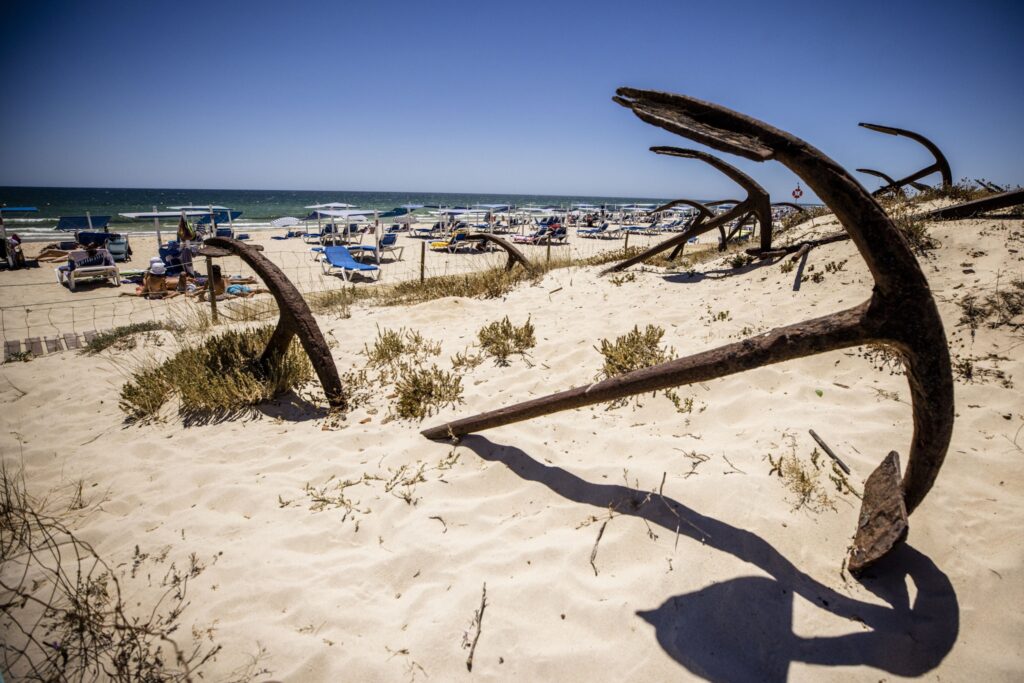
The Praia do Barril beach is located close to the village of Pedras de El-Rei where a pontoon bridge connects the mainland to the Ilha de Tavira.
The beach is accessed via a 1 km long footpath over the wildlife-rich lagoons of the Ria Formosa Natural Park or with the help of a miniature train originally used to transport the fishermen and their catch. The white sand extends for several kilometers, and those who go for a walk to the west will end up in a nearly deserted area that has been officially declared a nude beach.
- Ilha da Fuseta
To the west of Tavira is yet another island of the Ria Formosa Natural Park. It’s reached by boat from the fishing village of Fuseta (sometimes spelled Fuzeta) and it has a wonderful beach that still attracts more locals than tourists. When you arrive, walk east (to the left when facing the sea), which is the quieter and more beautiful spot on the island, offering a view of the beaches in Ilha de Tavira.
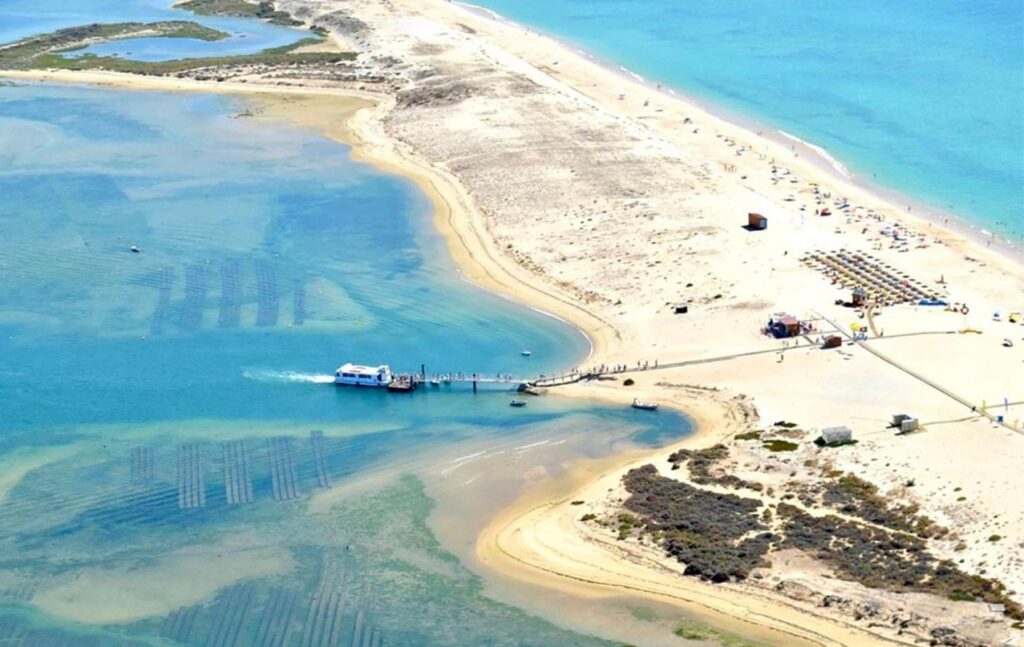
- Praia do Homem Nu
This was the Algarve’s original nudist beach but is not very popular as it is so difficult to travel to. The only way is to travel to Praia de Tavira or Praia da Terra Estreita, and then walk the 1 km along the beach.
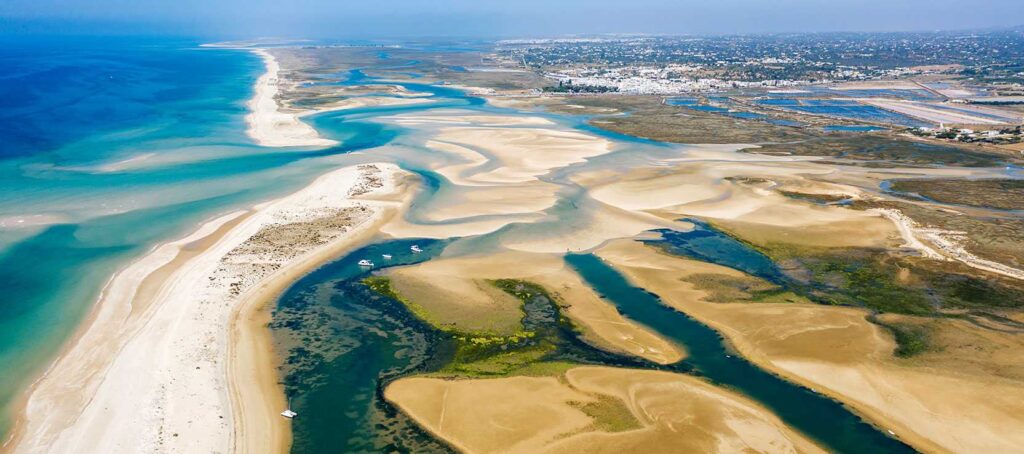
When to visit Tavira
The height of the tourist season is from June until August, but the weather is suitable for spending time on the beaches from May until the end of September. Spring and autumn are great seasons to visit the city, with sunny weather but without the intense heat or the summertime crowds.
The weather in the winter is unpredictable, but there tend to be more sunny days than cloudy, wet days. The low season (November to March) is a great time for a touring, hiking, or cycling holiday. As Tavira is a major town with a large permanent population, all restaurants, cafes, and bars remain open year-round.
How to get to Tavira
The international airport of the Algarve is Faro Airport, which is 35 km to the west of Tavira. The fastest option is to pre-book a private transfer (40 min), and there are cheaper shared transfers, but these take longer (60min).
It is possible to travel also by public transport from the airport to Tavira, first by bus (Faro Airport to Faro City) and then by train (Faro City to Tavira). This journey can take up to two hours due to the infrequent departures.
Accommodation in Tavira








